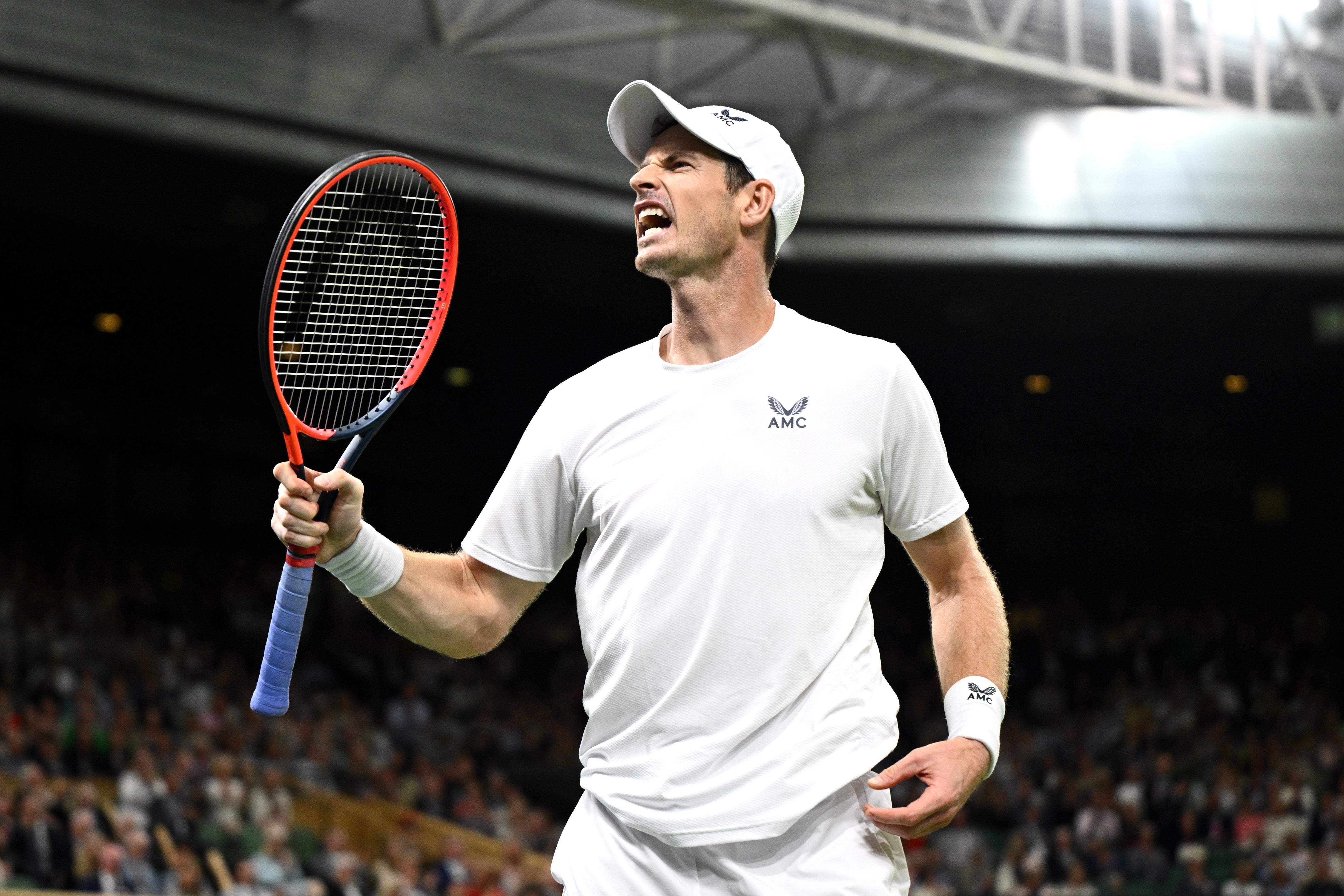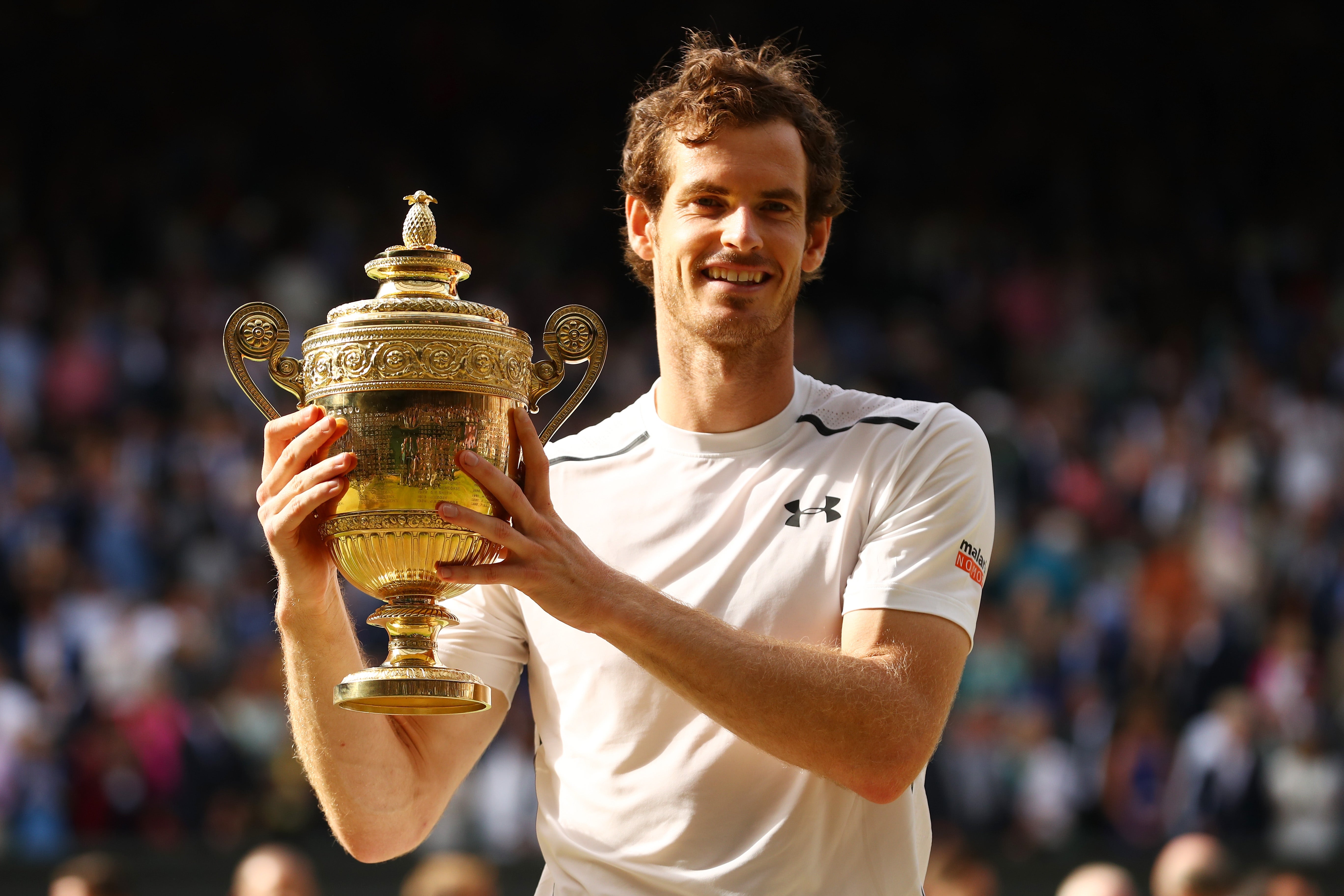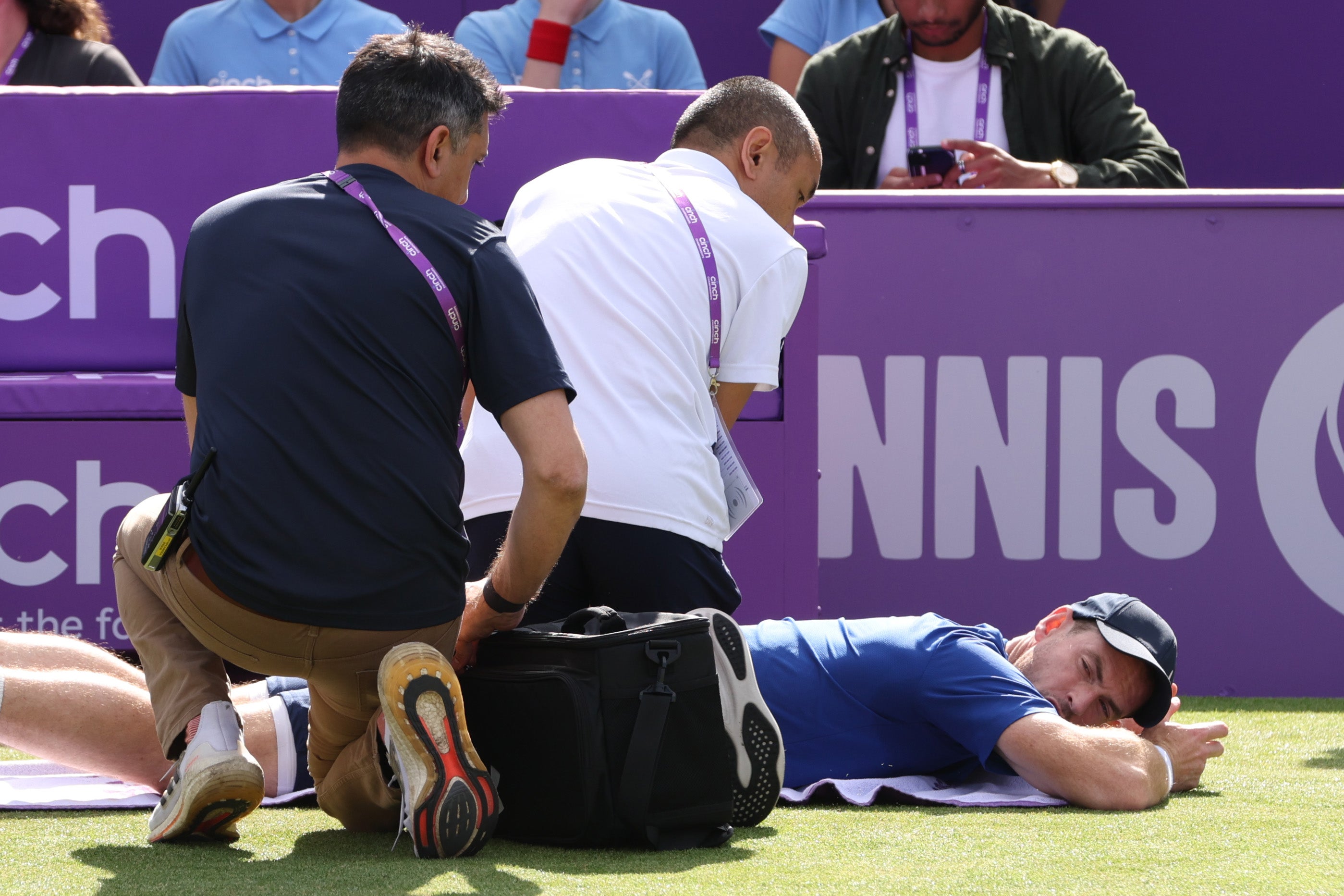Andy Murray’s body is broken – it’s time for him to retire
With a career that has long since provided him a spot in the pantheon of tennis players, Wimbledon’s team have made all the preparations for Andy Murray’s solemn farewell from the hallowed ground. But, Jim White asks, if his time is now finally up, what now for the man who lives to compete?


Everyone seems to agree this is how Andy Murray should retire from tennis. The countdown is on, and after yet another bout of surgery, no one was expecting him to hang around long against men more than 15 years younger than him for much longer, but there was hope of one more characteristically monumental five-set recovery victory before he finally succumbs to chronology
Those hopes were dashed on Tuesday when a statement from the 37-year-old’s team read: ‘Unfortunately, despite working incredibly hard on his recovery since his operation just over a week ago, Andy has taken the very difficult decision not to play the singles this year.
‘As you can imagine, he is extremely disappointed but has confirmed that he will be playing in the doubles with Jamie and looks forward to competing at Wimbledon for the last time.’
There will be tears aplenty in his post-match interview on court with Annabel Croft, tears in the royal box. In the stands, more blubbing than a drunken hen night as, to thunderous applause, he leaves the hallowed arena for the last time.
Three weeks later, he will head to Paris, to compete for Great Britain in the Olympics, chasing – almost certainly forlornly – a third gold medal. When he walks off the courts at Roland Garros for the very last time in his gilded history, after perhaps another valiant failure in the quarter-final, it will be some farewell.
Hugely loved, universally admired and stepping away before things finally turned embarrassing: what a way to go, the perfect coda to a career which is inarguably among the finest in British sporting history.
According to Debbie Jevans, the new chair of the club, Murray’s Wimbledon departure has been fully rehearsed and run through, ready for the off. “Andy has been such an amazing ambassador for the sport and the country,” she says. “We will celebrate accordingly.”

Despite the fact he is now 37, despite the reconstructed hip, despite the damaged ankle ligaments, despite the spinal realignment surgery, despite an operation last week to remove a cyst from his back that, for normal patients, requires a minimum six weeks of recuperation – Murray has grown increasingly weary of questions about his impending end. The fact is, this man whose entire career has centred on upending every expectation, is yet to be convinced it is completely over.
It might seem ridiculous that someone whose body has been so ravaged it will soon require an entire medical encyclopaedia to chart its various traumas can think there may be more to come. But for Murray physical weakness has never been a full stop. It is just another barrier that can be overcome.
“It’s tough to keep going when you’re injured and you don’t know when you’re going to get back to what you love,” he said in an interview published in this month’s edition of The Oldie magazine. “There have been some dark days. But I always wanted to get back on court so that helped keep me going even when my body was struggling.”
Getting back on the court is still what motivates him. He has long been an adherent of the old sporting lore that the time to retire is when you stop enjoying your sport. Murray not only still loves it, but he also craves the masochistic urgency of fighting to get in shape.
And he believes he can rebuild himself, because reconstructing his body is something he has done before. Indeed, it is what turned him into a champion in the first place. Remember how, when he was on his way to his first final at Wimbledon back in 2012, after yet another extraordinary winning shot that defied all the laws of physics, he stood on the hoardings of Centre Court and roared out his triumph while flexing his biceps like a Caledonian Superman? It was a reminder of how, by dint of a relentless programme of gym work, he had transformed himself from a talented but drip-thin also-ran into a muscle-bound contender, capable of thrashing his way through five-set marathons.
And dumbbells were not the only thing he embraced: in a bid to make his body more efficient, he took on board sports science like few before or since. He did everything possible to prepare himself physically for victory. Take his diet, which followed a meticulously planned regime. Not least the 50 pieces of sushi a day he still consumes.
The mix of protein and carbohydrates without a hint of fat is reckoned the perfect way to replenish physical resources after an intense physical workout. So much of the stuff has he eaten over the years that he may be single-handedly responsible for the diminution of the world’s tuna stocks. And Murray is rarely seen without a bottle in his hand (not alcohol, obviously: he is a lifelong teetotaller). He sips continuously at a cloudy, lemon-coloured liquid. Mixed by his nutritionist, it’s a formula of glucose, sodium, potassium and other minerals that help sustain his energy and concentration levels.
Such disciplined application of science brought rewards. It allowed him to compete with the three super players of his era: Rafael Nadal, Roger Federer and Novak Djokovic. And he believes, if not taking him back to the summit he occupied a decade ago, by keeping up his fitness and dietary regime he can overcome any physical privation, get back on court and remain competitive.
Because being competitive is what drives him. The idea of not being out there scrapping for every point is anathema. He has long worried about what he might do if he wasn’t pushing himself on court. True, the BBC would fall over themselves to offer him a job as a pundit. And you imagine he would be a superb addition to their team, more John McEnroe spiky than Tim Henman luvvie.
But that would only be for two weeks of the year. What would he do with the rest of his time? Yes, there are his four children. And yes, there is the Cromlix hotel, the place in his hometown of Dunblane which his wife Kim has turned into a much-in-demand country house escape. But it is impossible to imagine him as a Scots Basil Fawlty, sulking behind the reception desk.

For sure, he can follow Goran Ivanisevic, Boris Becker and his own former mentor Ivan Lendl and use his experience to coach young pretenders. But, privately, each of them would tell him they much preferred to be doing the hitting rather than telling someone else how to do it. His urge is to go on as long as he remains capable. And if he is temporarily physically reduced, he will work like a demented Trojan to get himself back in shape.
Besides, he will know what happened to others coming to the end of their career. For a while, Pete Sampras was held up as the glowing example of how to step away from the game. In 2002, he announced his last-ever match was to be the US Open final, where he beat Andre Agassi. At just 31, Sampras took off to spend more time with his family, in privacy.
What a way to go, at the very top, lauded as an all-time great. That’s what all of us watching from a distance reckon is the way to do it. But the thing is, within a couple of years Sampras was so bored, he was back playing. And he was still good: in 2011, nine years after he had apparently retired, playing an exhibition against Milos Raonic, his serve was timed at 124mph. That’s what Murray wants to be: out there for as long as he can.
For sure, there will be plenty telling him now is the perfect time to go. It is more than likely, for instance, that he will have been approached to film his own version of Twelve Final Days, Asif Kapadia’s magnificent account of the last moments of Federer’s career. And, however choreographed that departure may have been, with Kapadia’s camera orchestrating every step, even Federer, tennis’s finest ever exponent, could not match the double whammy of Wimbledon and the Olympics that is available this summer to mark a Murray swansong.
But you suspect, however neat the script may be, he may not ready to let the credits come up on his career entirely. His priority remains the fight to get back on court. Perhaps not to win, even he recognises that is unlikely. But just to be out there competing. Because for a genuine sporting great like Sir Andy Murray there is always one more chance. One more court. One more time.
Subscribe to Independent Premium to bookmark this article
Want to bookmark your favourite articles and stories to read or reference later? Start your Independent Premium subscription today.





Join our commenting forum
Join thought-provoking conversations, follow other Independent readers and see their replies
Comments